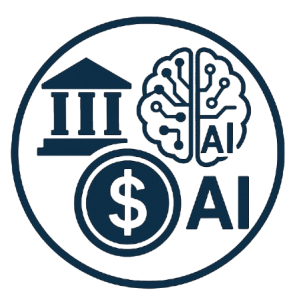Understanding the Key Objectives of Modern Macroeconomics
Macroeconomics, the study of the economy as a whole, plays a crucial role in shaping the economic landscape of nations. Its core objectives guide policymakers in their efforts to achieve stability and prosperity. These goals are interconnected and often require careful balancing to ensure long-term economic well-being. Let’s delve into the primary aims of modern macroeconomics.
Sustainable Economic Growth: The Foundation of Prosperity
At the heart of macroeconomic policy lies the pursuit of sustainable economic growth. This means increasing the production of goods and services over time, leading to higher living standards for citizens. Economists measure economic growth primarily through Gross Domestic Product (GDP), which represents the total value of all goods and services produced within a country’s borders in a specific period. A healthy and growing GDP signals a thriving economy, creating opportunities for businesses and individuals alike.
However, the focus isn’t solely on rapid growth. The “sustainable” aspect is equally important. Sustainable growth implies that economic expansion should not come at the expense of future generations or the environment. This requires responsible resource management, investment in education and infrastructure, and policies that promote innovation and technological advancements. Simply put, sustainable growth is about building an economy that can flourish over the long term without depleting its resources or harming the planet. Ignoring this aspect can lead to significant challenges, such as environmental degradation, resource scarcity, and ultimately, a decline in economic well-being. Many countries have invested in green technologies in an attempt to foster this.
Furthermore, economic growth needs to be inclusive, benefiting all segments of society. This requires policies that address income inequality, promote equal opportunities, and provide a safety net for those who are vulnerable. Inclusive growth ensures that the benefits of economic expansion are shared more widely, leading to greater social cohesion and stability. A truly prosperous society is one where everyone has the chance to participate in and benefit from economic growth.
Controlling Inflation: Maintaining Price Stability
Inflation, the sustained increase in the general price level of goods and services in an economy, is a major concern for policymakers. High inflation erodes the purchasing power of money, making it more expensive for consumers to buy goods and services. It can also create uncertainty for businesses, discouraging investment and economic growth. Therefore, controlling inflation is a key objective of modern macroeconomics.
Central banks, such as the Federal Reserve in the United States or the European Central Bank in Europe, play a central role in managing inflation. They typically use monetary policy tools, such as adjusting interest rates or controlling the money supply, to influence the level of aggregate demand in the economy. Raising interest rates, for example, can curb spending and investment, thereby reducing inflationary pressures. Conversely, lowering interest rates can stimulate economic activity, which may be appropriate during periods of recession or low inflation.
Inflation can be caused by various factors, including excessive demand for goods and services (demand-pull inflation) or rising production costs (cost-push inflation). Understanding the underlying causes of inflation is crucial for implementing effective policies to control it. For example, if inflation is driven by supply chain disruptions, policies aimed at increasing domestic production or diversifying supply sources may be more effective than simply raising interest rates. The goal of macroeconomics is price stability, where prices are relatively stable over time, allowing businesses and consumers to make informed decisions.
The Delicate Balance: Growth vs. Inflation
Managing inflation often involves a delicate balancing act. While controlling inflation is essential, overly aggressive policies can stifle economic growth. Raising interest rates too sharply, for example, can lead to a recession, characterized by falling output and rising unemployment. Therefore, policymakers must carefully weigh the potential trade-offs between controlling inflation and promoting economic growth. See more about Japanese cuisine.
Promoting Full Employment: Creating Job Opportunities
Another crucial objective of macroeconomics is to promote full employment, meaning an economy where almost everyone who wants a job can find one. High unemployment rates can have devastating consequences for individuals and families, leading to financial hardship, social unrest, and reduced overall economic output. Policies aimed at promoting full employment seek to create job opportunities and reduce unemployment rates to a minimum.
Governments can use various tools to promote full employment, including fiscal policy (government spending and taxation) and monetary policy (interest rates and money supply). Fiscal policy measures, such as infrastructure projects or tax cuts, can stimulate economic activity and create jobs directly. Monetary policy, as discussed earlier, can also influence employment by affecting overall demand in the economy.
Furthermore, policies aimed at improving education and training, fostering entrepreneurship, and removing barriers to labor mobility can also contribute to full employment. A skilled and adaptable workforce is essential for attracting investment and creating high-quality jobs. Also, policies that support small businesses and encourage innovation can help to drive job creation and economic growth.
Maintaining a Balance of Payments Equilibrium: Managing International Transactions
In an increasingly globalized world, maintaining a balance of payments equilibrium is essential for economic stability. The balance of payments is a record of all economic transactions between a country and the rest of the world, including trade in goods and services, investment flows, and financial transactions. A persistent imbalance in the balance of payments can lead to currency fluctuations, financial instability, and reduced economic competitiveness.
A current account deficit, where a country imports more goods and services than it exports, can be financed by borrowing from abroad or selling assets to foreign investors. While a current account deficit is not necessarily a bad thing in the short term, a persistent deficit can lead to a build-up of foreign debt, making the country more vulnerable to external shocks.
Policymakers can use various tools to manage the balance of payments, including exchange rate policies, trade policies, and capital controls. Exchange rate policies can influence the relative prices of a country’s goods and services, affecting its competitiveness in international markets. Trade policies, such as tariffs and quotas, can restrict imports and promote exports. Capital controls can limit the flow of capital in and out of the country. However, capital controls are generally viewed as a less desirable option, as they can stifle investment and reduce economic efficiency.












